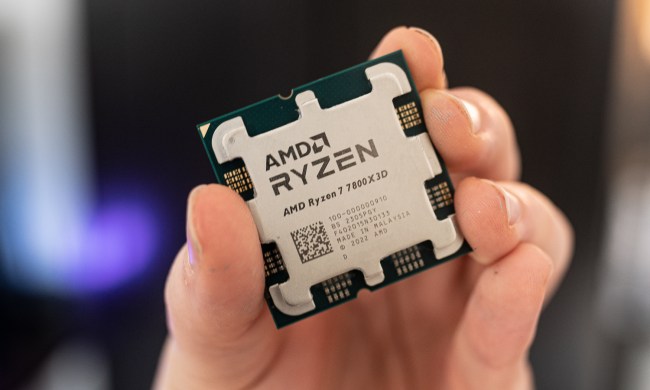AMD launched its Ryzen 6000 processors on Thursday, bringing the first laptops with the Zen 3+ architecture to market to counter Intel’s upcoming 12th-gen Alder Lake chips.
AMD is making big claims about this generation, including up to 24 hours of battery life, twice the gaming performance with integrated graphics, and high core counts down to the most efficient 15W chips.

Unlike Intel, which leads its 12th-gen mobile launch with only H-series processors, AMD is dumping everything at once. There are 10 new CPUs arriving, from efficient six-core CPUs like the Ryzen 5 6600U to high-end overclocking behemoths like the Ryzen 9 6980HX. You can see the full specs in the table below.
| Cores/Threads | Power draw | |
| Ryzen 5 6600 U | 6/12 | 15-28W |
| Ryzen 7 6800U | 8/16 | 15-28W |
| Ryzen 5 6600HS | 6/12 | 35W |
| Ryzen 7 6800HS | 8/16 | 35W |
| Ryzen 9 6900HS | 8/16 | 35W |
| Ryzen 9 6980HS | 8/16 | 35W |
| Ryzen 5 6600H | 6/12 | 45W |
| Ryzen 7 6800H | 8/16 | 45W |
| Ryzen 9 6900HX | 8/16 | 45W+ |
| Ryzen 9 6980HX | 8/16 | 45W+ |
AMD says the new generation brings a 1.17x generational improvement at 15W, and a 1.3x improvement at 28W. On the efficient U-series processors, AMD says the new generation brings up to three hours of additional battery life, bringing some machines to the coveted line of 24 hours of battery life.
Unfortunately, we don’t have an apples-to-apples comparison with Intel’s 12th-gen mobile processors. AMD says these chips weren’t available during its benchmarking period. Overall, though, the company says the new chips bring a 2.62x improvement in performance per watt, which helps cram more power into thin and light form factors.
AMD achieved all of this through optimizations from architecture design to platform features. Changes like hardware-assisted wake from sleep and a dynamic power plan help Ryzen 6000 processors achieve their full potential, according to AMD. The new platform features modernize the range, too. Ryzen 6000 supports DDR5 memory, USB4, WiFi 6E, and a bevy of other modern platform features.
For gamers, AMD has even better news: RDNA 2 integrated graphics. AMD is adopting the RDNA 2 architecture it uses on RX 6000 graphics cards for integrated graphics. There are two models of integrated graphics available, and they’ll come with every Ryzen 6000 chip.
The Radeon 680M comes on Ryzen 7 and 9 processors, and it features 12 RDNA 2 graphics cores and a clock speed of up to 2.4GHz. With this chip, AMD says you “can play pretty much every game out there in full HD,” and the results back that up. AMD showed the chip hitting 62 frames per second (fps) in Borderlands 3, as well as 51 fps in Metro Exodus.

What’s most surprising is how much faster these integrated graphics are compared to Intel. We praised Intel’s Iris Xe graphics for their acceptable integrated performance, but AMD shows its integrated graphics more than doubling the performance in some cases. We’ll have to wait to test them ourselves, but the numbers look promising.
Perhaps even more impressive is the comparison to discrete graphics. AMD showed the RX 6800M integrated graphics going toe-to-toe with a discrete GeForce GTX 1650 Max-Q.
AMD is leading the launch with its HS-series processors for high-end thin and light gaming notebooks. The HX-series for larger gaming notebooks, as well as the efficient U-series processors, will arrive at the beginning of March. AMD says over 200 Ryzen 6000 systems are arriving in 2022, including the Acer Nitro 5, Razer Blade 14, and Alienware M17 R5.






